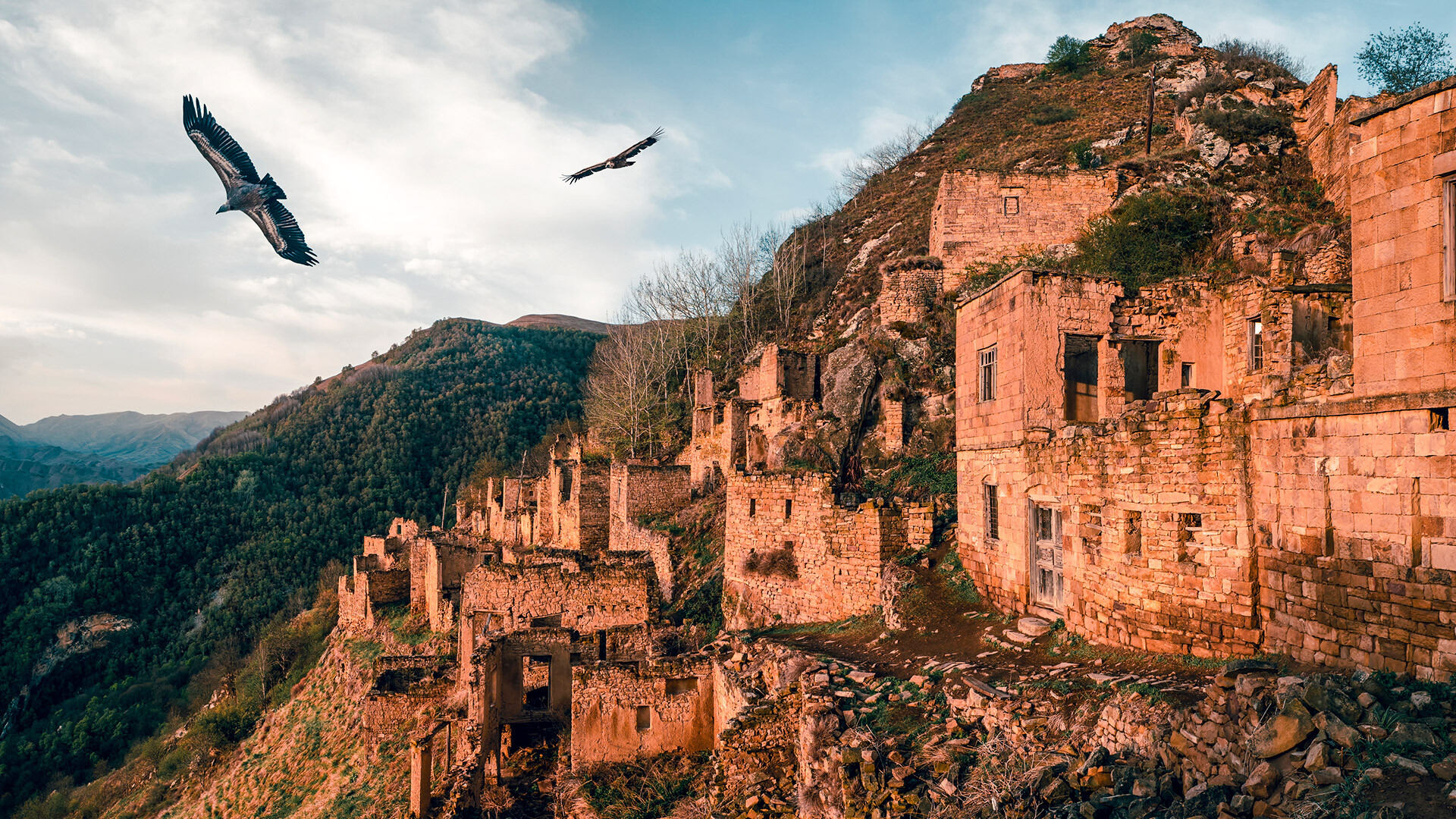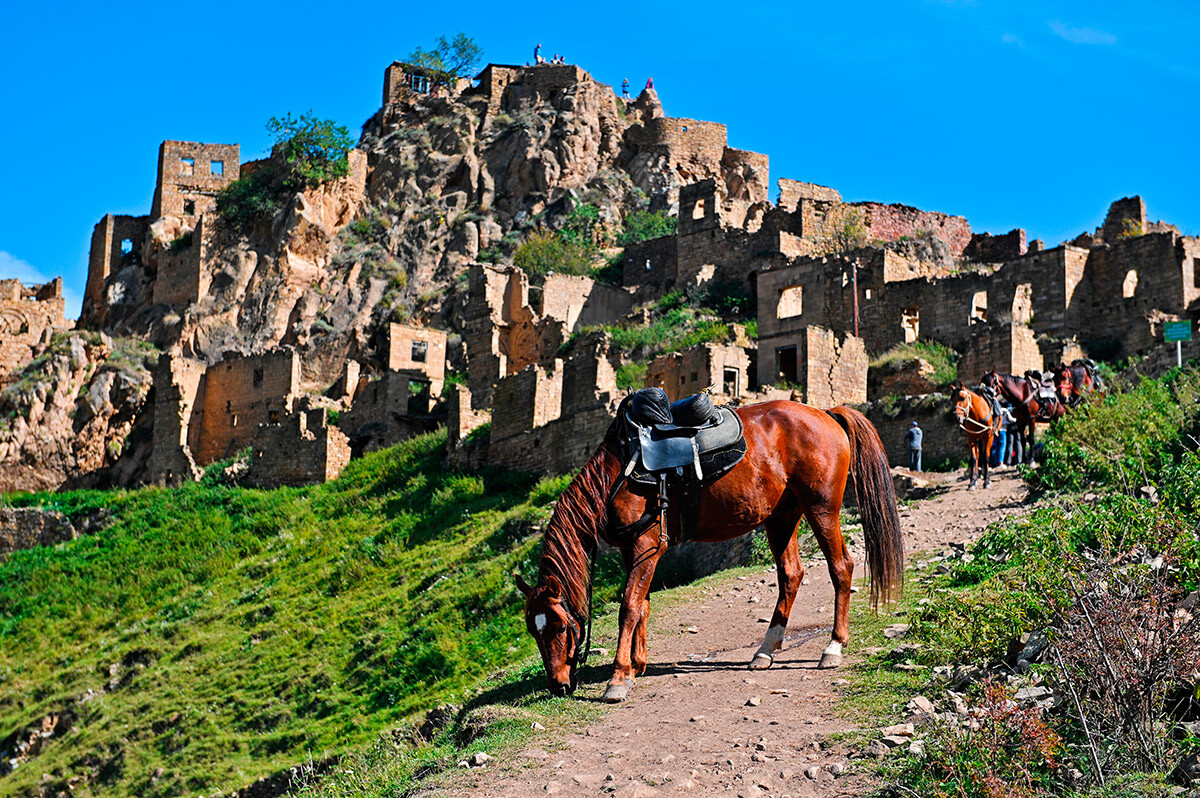Gamsutl: An ancient ghost village in the mountains of Dagestan (PHOTOS)

Gamsutl has an aura of mystery. It has been called the ‘Machu Picchu of Dagestan’, a “dead city”, a high-altitude prison and a place brought to ruin by cholera. Over its centuries-old history, the Avar village has become shrouded by myths, both plausible and fantastic. And, it goes without saying that, like many of the most beautiful places in the North Caucasus, it is situated far from civilization.

But, that is exactly what the original intention was. Those who founded it knew what they were doing: The village is perched on the very crest of Mount Gamsutlmeer at an altitude of 1,418 meters above sea level in the Gunibsky District of Dagestan and can only be reached by a single, narrow path. This made the village easy to defend and, in its centuries-old history, it was never conquered by a single army.

The exact age of the village is unknown. According to one theory, it was founded by Avar khans (the Avars are one of the indigenous peoples of the North Caucasus and the most numerous ethnic group in present-day Dagestan). The khan who founded Gamsutl lived with his family on top of the mountain, while his army settled on the slopes below. In the Avar language, ‘Gamsutl’ means “at the foot of the khan’s fortress”. According to another theory, the aul [village] was some sort of place of confinement for offenders. “But there is not a single existing scholarly monograph on Gamsutl,” says Zaur Tsokholov, the organizer of the first excursions to the abandoned aul.

The locals believed that the aul was at least 1,600 years old. Researchers have found evidence of an even earlier date of foundation: In the vicinity of the village, they came across a tombstone with an inscription in Old Persian that was about 2,000 years old. It is likely that the aul had been inhabited by other ethnic groups, something borne out by some inscriptions in Persian on the walls of houses.

From afar, the ruins of the village resemble swallows’ nests. The houses are partly carved out of the rock. And if the uneven surface prevented the construction of a house, the rock was chipped away and used as building material. The roofs of the houses were covered with beams, and earth and straw were piled on top. Heavy rain used to partly wash away the roofs and they had to be repaired regularly.

“After heavy rain, whatever you do - don’t touch the buildings. An entire wall could collapse,” says Zaur. The walls of the houses are held together with clay and they deteriorate easily. Moreover, the houses in Gamsutl appear, at first sight, to be thousands of years old. But it is not the case. The majority of the surviving buildings date back to the early 19th century.

Even a few decades ago, Gamsutl was still inhabited. The village had its own school, a kindergarten, a grocery store, a hospital and a maternity clinic. The residents, particularly young people, only started leaving the village in significant numbers in the 1970s-1980s - to seek work in the capital of Dagestan (journey time to Makhachkala is just three hours) and because of the village’s inaccessibility.

“In the 1970s, the rivers in these parts would be full of water. Even in my own childhood, we could only get across the river at Chokh using horses and now any child can wade across it. And, one day, mudslides swept away the bridge over the river. The residents of Gamsutl were cut off from the outside world for two months. This event prompted many to move out and abandon their homes,” says Zaur, adding that many in the mountain village also perished in a cholera outbreak.

But, a number of elderly residents, nevertheless, remained to live out their years there. In 2002, there were 17 inhabitants and, by 2010, the number had fallen to just 10. One of them was Abdulzhalil Abdulzhalilov, who was even born in the village. Once a month, he would go down to buy groceries, collect his pension, get the latest news and drop by the library. In Gamsutl, he kept bees and, in his free time, worked on a book he was writing about religion and greeted tourists. He is said to have given himself the title of “mayor of Gamsutl’.

Quite soon, only he and an elderly woman remained in the village and they weren’t even on speaking terms. Ironic though it may seem, despite the fact that they found themselves in the middle of hundreds of empty buildings, the bone of contention between them and the cause of their quarrel was land. When she died, Abdulzhalil was the only inhabitant left in Gamsutl. In 2015, he also passed away. The village was then completely deserted.

In the last few decades, the “ghost village” in the mountains has been one of Dagestan’s main tourist attractions. Many people find the aesthetics of abandonment attractive, but the surrounding precipices and mountains give the location an even more atmospheric aspect.

“As it happens, I breezed into this ancient mountain village on my own. I breezed in and stopped in my tracks. Time had stood still. Nothing else in the world existed. Just silence, blank walls and cadaverous windows… It is not a creepy place, but very quirky,” recalls Alexander Popov, who has been to Gamsutl several times.

Local residents also try to earn some spare cash from Gamsutl by taking tourists up the mountain and arranging horse trekking expeditions and sightseeing tours. As a result, there can be a lot of people here during the day. So, the main piece of advice from those who have been is to arrive at the village as early as possible, preferably at dawn - in order to be able to roam its ancient streets in solitude as Abdulzhalil Abdulzhalilov once did and to hear the same deafening silence.

